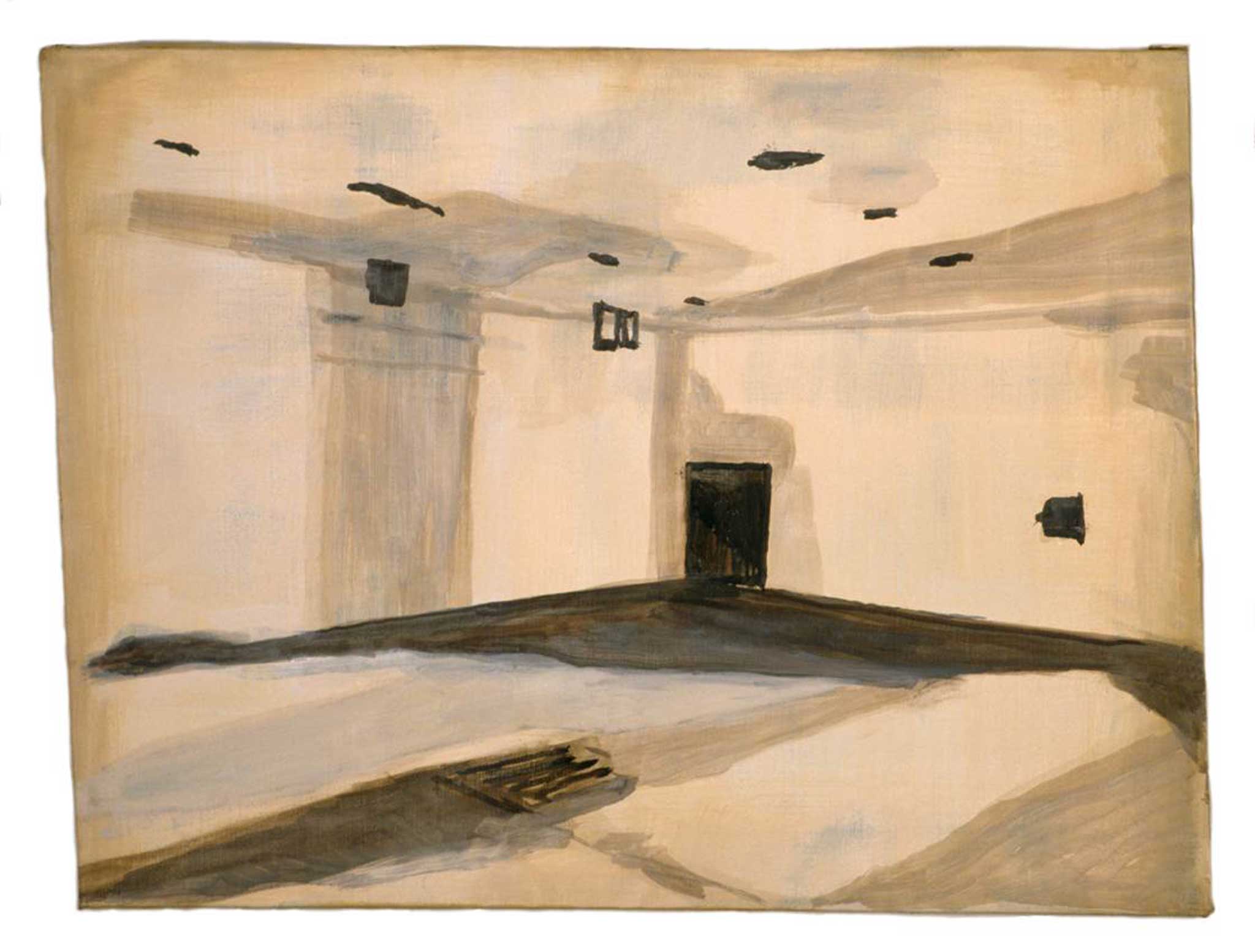Great Works: Gas Chamber (1986) by Luc Tuymans
The Over Holland Collection, In honor of Caryl Chessman

There is something washed out, wrung out, or even bleached out about this painting by the Antwerp painter Luc Tuymans. It looks so pale and withdrawn from us, this almost cursorily limned, dully functional room of sorts, quite crude and almost childlike in its fashioning. Why is the mood of it so hesitant, so withdrawn? It is almost as if there has been a great deal of soul-searching before applying paint to canvas. The painter is drawing back from the emotional enormity of it all. He doesn't really want to begin...
It is based closely, almost slavishly, on a watercolour of the same year, which shows similar signs of what we might describe as a kind of spare and even awkward... perfunctoriness? And yet that word does not quite feel right. Perfunctoriness seems to hint at a lack of care, and even a kind of nonchalance. Surely not that then. No, not perfunctoriness then, but perhaps a fear of not being able to do the subject justice because it is still, 70-odd years on, too hot to touch.
This level of what feels like... let us call it holding back or a kind of studied level of physical and psychological disengagement, is not unusual in Tuymans' work. A few years after he painted the work you can see on this page, he created an entire series of curiously washed-out faces based on photographic images of sick patients. There is no evidence of disease in those faces, but there is the burden of the memory of disease or, to put it slightly differently, the burden of the after-image of disease. And burden is exactly the word that we require here. This is too terrible a subject by half. Tuymans finds it difficult to approach it, to do it justice. In fact, it is a subject that is much more written about than painted.
The watercolour upon which the work is based was done in situ, when Tuymans was visiting Dachau. Both these paintings are very modest in size – which, once again, must have been an issue for him. It would have been immoderate, and even jarringly expansive, to paint this room on a larger scale, to give, for example, too much attention to detail. It would have been to expose it to view to too great an extent. The message of its smallness seems to be this then: perhaps it ought still to remain a shameful secret, one from which we cannot but flinch, one that we would rather not record at all.
And yet he has recorded it, and he has done so by paying attention, in the form of painted hintings, to all that we cannot possibly see – which is, of course, everything that went on in this room and many others like it. There are stains on these walls, ill-defined – almost everything is ill-defined here. There are randomly blotchy cavities and a grille in the centre of the floor. Little more than that. This room is an utterly, blandly impersonal utility vehicle. The colours are almost cleansed of colour, scrubbed raw of all that colour offers by way of vibrancy and human engagement, until we are left with nothing but a kind of numbing tonal dullness of greys, off-whites, browns, all too pallid and unemphatic to stir the blood. And yet this very absence of feeling is, we feel, a troubling thing because the whole purpose of this terrible room was to raise human emotions to a fever pitch of uncontrollable despair. This kind of rendering muffles it all away, gags, mutes, suffocates all those deaths.
Everything is understatement here, because to speak too loudly, too forcefully, too vividly, too painstakingly of all of this would be yet another kind of abomination – or even hubris. The merest glance – and this feels likes the visual equivalent of the furtive, hurried glance and then a passing on – is chilling enough.
About the artist: Luc Tuymans (born 1958)
The painter and curator Luc Tuymans was born in 1958 near Antwerp, and studied art in Brussels. A formative influence upon his painting life was the sighting in Budapest, at the age of 19, of various paintings by El Greco. At that time, Tuymans was working as a railway guard. During the 1980s, he abandoned paintings in favour of video art, and much of his later work feels haunted by found images.
Join our commenting forum
Join thought-provoking conversations, follow other Independent readers and see their replies
Comments